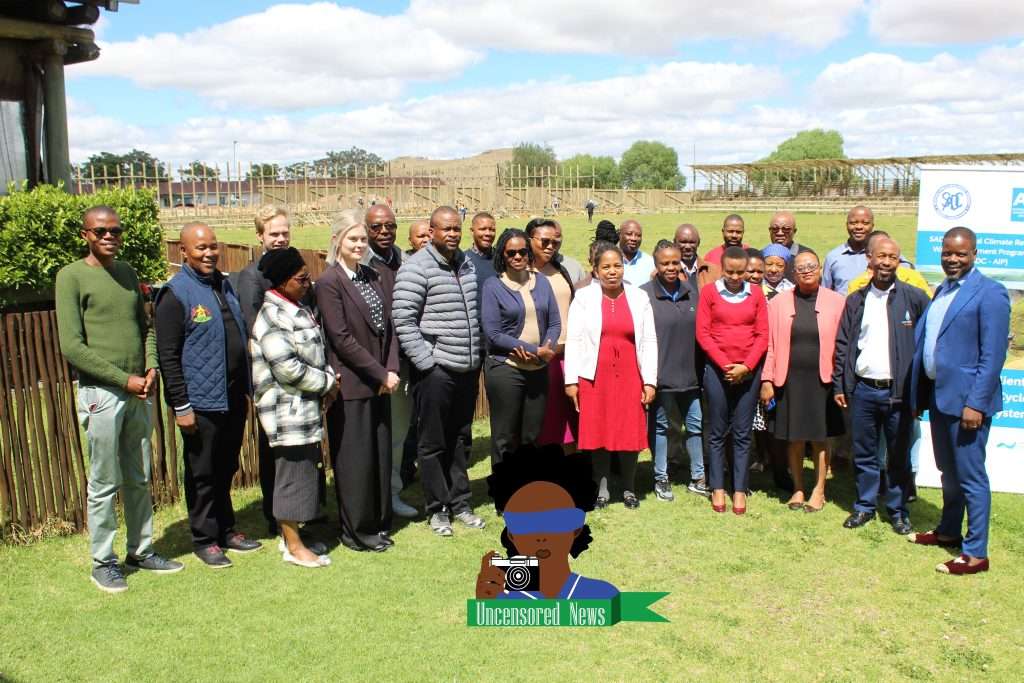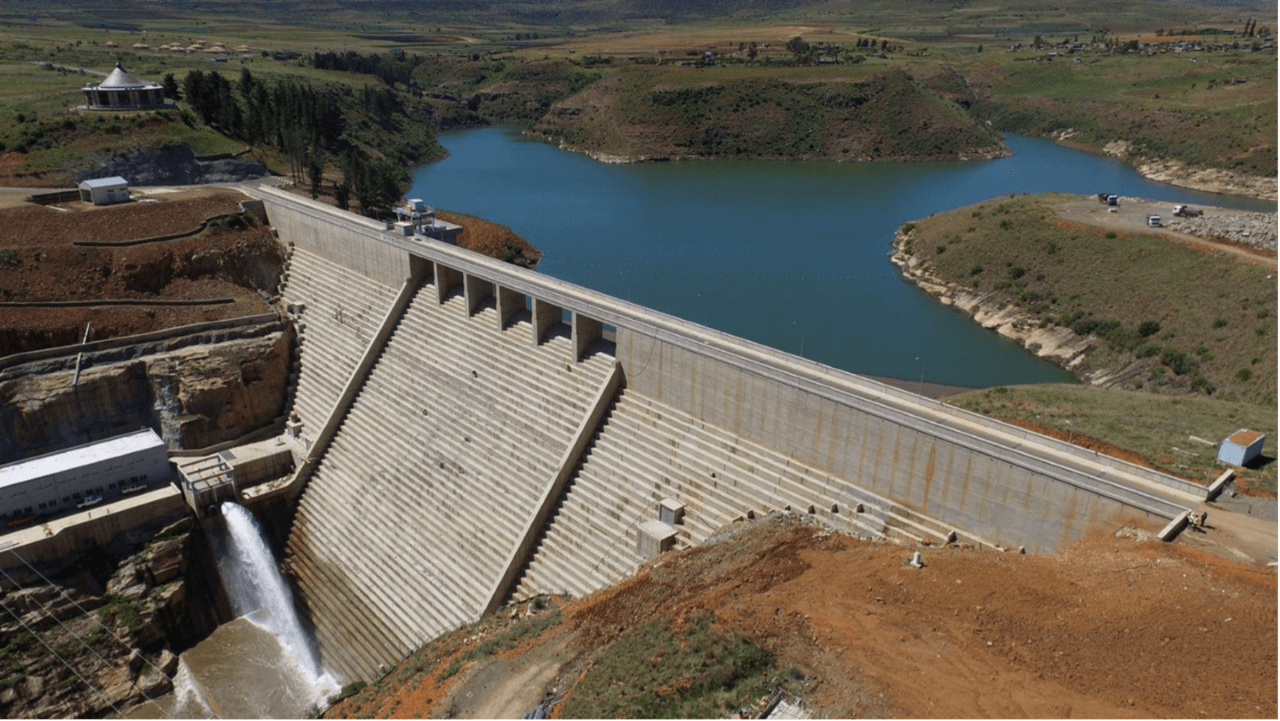Why Growing Siltation in Metolong Dam Should Concern You
11 November 2024 by Pascalinah Kabi
Est. Read Time: 4m 27s
Listen to this article:

A trip to a Maseru health facility for critical surgery or to deliver a newborn could soon come with a devastating twist—being turned away due to a lack of water needed to perform life-saving procedures.
This risk is growing as Metolong Dam faces increasing threats from soil erosion, which deposits silt into its basin, reducing its water capacity.
The lifespan of this vital dam, which supplies clean water to Maseru, Mazenod, Morija, Teyateyaneng, and smaller villages like Ha Mosalla and Ha Motloheloa, is now under threat from poor land management practices.
ReNOKA Deputy Coordinator Matšolo Migwi expressed concern about the situation, stating that Lesotho must be worried about the status of its watercourses.
“The rapid silting of our dams is a concern. For example, Metolong Dam has silted up in a very short time, drastically reducing its lifespan,” Migwi said in an exclusive interview with Uncensored News.
Migwi’s warning highlights a pressing national challenge, but the issue feels especially close to home for hydrogeologists like Tlhoriso Morienyane from Lesotho’s Department of Water Affairs.
Morienyane emphasises that siltation in Metolong Dam is not just an environmental concern—it is a potential crisis that could affect every aspect of life in Lesotho.
“Communities need to understand that if the dam’s capacity continues to diminish, it will impact all of us because so much of what we do here in Lesotho centres around Maseru,” Morienyane explained.
“When Maseru lacks water, it means major hospitals in the city won’t operate, and other critical institutions the country depends on will also be unable to function. This is why it’s essential to ensure Metolong Dam remains operational and extends beyond its projected 30-year lifespan,” he emphasised.
You should be worried
With the government now highlighting siltation as a critical concern, the future of clean water access from Metolong Dam to Maseru, Mazenod, Morija, Teyateyaneng, and smaller villages such as Ha Mosalla and Ha Motloheloa lies in your hands.
To understand the gravity of the situation, Morienyane explained that studies conducted at the Metolong Dam have pinpointed poor land use practices as the primary driver of the ongoing siltation. Practices such as deforestation and the removal of vegetation significantly weaken the soil’s ability to retain water. This, in turn, leads to increased soil erosion, with sediment being carried into rivers and dams, exacerbating the siltation problem.
For livestock owners and herders, overgrazing is another significant issue. When grazing is too intense, it damages vegetation, leaving the soil exposed to erosion. This eroded soil eventually makes its way into water bodies, accelerating the process of siltation.
Given that most families in Metolong relies on farming, it is crucial for farmers to avoid improper ploughing, monoculture practices, and cultivating steep slopes without erosion control measures. Such practices can severely degrade the land, leading to soil erosion that contributes to the siltation of nearby water sources like Metolong Dam.
To address this growing concern, Morienyane explained that the government has tasked ReNOKA—a national movement focused on uniting communities to protect and restore Lesotho’s natural resources—to tackle sedimentation in the Metolong Dam.
“We can all see the benefits of Metolong right now. It’s still a relatively new dam, and we cannot afford to let its capacity diminish at this rate. That’s why ReNOKA’s mandate has been expanded to tackle this issue,” Morienyane told Uncensored News on October 29, 2024.
He emphasised that ReNOKA’s role involves working closely with local communities to raise awareness about the impacts of siltation on the dam.
“This effort is not only about addressing sedimentation; it’s also about ensuring communities understand that a significant reduction in the dam’s capacity will negatively affect everyone,” Morienyane added.
Although Morienyane did not have the exact figures for the reduction in dam capacity at the time of the interview, he cautioned that even communities not directly using water from Metolong are still losing their land to soil erosion.
“Wetlands are disappearing, and our land is turning into furrows, which means their resources are being eroded as well,” he explained.
To address this issue, Morienyane emphasised the need for collective action. “We all need to work together to ensure that Metolong Dam remains functional for the long term, as it was originally projected to last for 30 years.”
He urged every citizen of Lesotho to fully participate in efforts aimed at reversing the siltation in the Metolong Dam.
“We must do everything in our power to prevent the dam from being choked by sand. While some of the causes are natural and may be difficult to stop, if we can delay the process, we will have time to prepare for life after the dam’s 30-year lifespan. Everyone must get involved in efforts to stop soil erosion because we will all benefit,” Morienyane concluded.
Protecting Lesotho’s ecosystems
Metolong Dam is not the only water body that Lesotho and its citizens should be concerned about. In fact, ReNOKA Deputy Coordinator Matšolo Migwi emphasised the urgent need for the country to take issues related to the protection and preservation of its natural resources seriously.
“To be honest, we have every reason to be very worried as a nation. We need to take these issues extremely seriously. As I mentioned regarding the data on land cover, we are closely monitoring the condition of wetlands. Reports from 2017 to 2022 and again from 2022 to 2023 reveal alarming trends.
She highlighted that in areas where ReNOKA is active, some wetlands have shrunk by more than 50 percent between 2017 and 2023—a significant decline requiring immediate, concrete action to address the deteriorating state of the country’s rivers.
“The health of our rivers involves more than just waste management; sedimentation is also a critical issue,” Migwi said.
Migwi further stressed that high turbidity in river waters significantly affects their overall health, and the rapid silting of dams, such as Metolong Dam, is a growing concern.
“Metolong Dam has silted up in a very short time, drastically reducing its lifespan,” she warned.
For the future of Lesotho, Migwi underscored that these are critical issues that all decision-makers and citizens must acknowledge and take action to reverse.
“The condition of our wetlands and rivers is indeed in a bad state, largely due to our land use practices and various other contributing factors,” Migwi explained.


